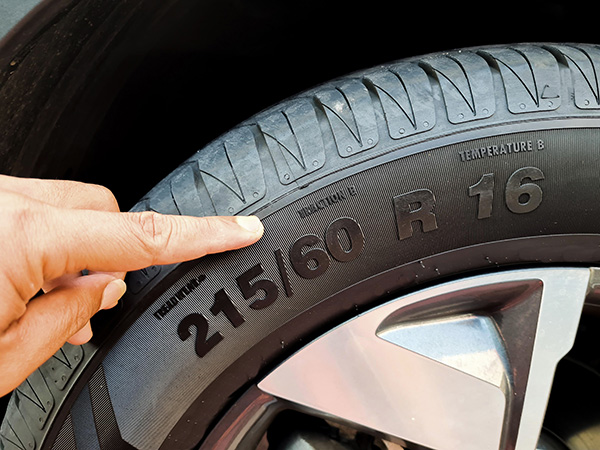
Ever looked at your tire and wondered what those mysterious numbers and letters mean? Tire sidewall markings are like a secret code. They hold a wealth of information that can help you understand your tire’s capabilities, limitations, and specifications. Whether you’re a car enthusiast or just trying to make sure your ride is safe, decoding these markings is necessary.
Tire sidewall markings are packed with essential information, but they’re not always easy to interpret at first glance. Let’s break down the most common elements you’ll find and what each part tells you about your tire.
1. Tire Type and Width
The tire markings start with a letter or a combination of letters that indicate the type of tire and its width. For example, in a tire marked “P215/60R16,” the “P” signifies that the tire is for passenger vehicles. If you see “LT” (Light Truck) or “T” (Temporary), it indicates the tire's intended use.
The three-digit number following the letter (215 in this case) represents the tire's width in millimeters from sidewall to sidewall. So, a 215mm width indicates a tire that is 215 millimeters wide.
2. Aspect Ratio
Next comes the aspect ratio, which is a percentage. In the example “P215/60R16,” the “60” is the aspect ratio. This number represents the height of the tire’s sidewall as a percentage of its width. An aspect ratio of 60 means the sidewall height is 60% of the tire’s width. A higher aspect ratio indicates a taller sidewall, which generally offers a smoother ride but can affect handling. Conversely, a lower ratio means a shorter sidewall, which often provides better handling and stability but can lead to a harsher ride.
3. Construction Type
The letter after the aspect ratio (in this case, “R”) denotes the tire’s construction type. “R” stands for radial, which is the most common type of construction where the tire’s internal ply cords run radially from the center of the wheel. Other types include “D” for diagonal or bias-ply and “B” for belted bias. Radial tires are preferred for their durability and better performance in terms of ride comfort and handling.
4. Rim Diameter
Following the construction type, you’ll see a two-digit number (16 in “P215/60R16”) which indicates the diameter of the rim in inches that the tire is designed to fit. This measurement is crucial for ensuring that the tire will fit correctly on your vehicle's wheels.
5. Load Index and Speed Rating
The load index is a numerical code that specifies the maximum weight the tire can support when properly inflated. For example, a load index of “91” corresponds to a load capacity of about 1,356 pounds. Next to the load index, you’ll find a speed rating letter, such as “H” or “V.” This letter indicates the maximum speed at which the tire can safely operate. For instance, “H” stands for a maximum speed of 130 mph, while “V” means the tire can handle up to 149 mph.
6. Tire Manufacturing Date
Another important piece of information is the tire’s manufacturing date, typically found in the DOT (Department of Transportation) code on the sidewall. This four-digit code reveals the week and year the tire was manufactured. For instance, a code of “1819” means the tire was made in the 18th week of 2019. This is crucial for determining the tire’s age and ensuring it is still safe to use.
7. Additional Markings
You might also see other markings, such as the maximum tire pressure, tread wear indicators, and the manufacturer's branding. These provide additional safety and performance information specific to the tire’s design and intended use.
Why Understanding Tire Markings Matters
Understanding these markings isn’t just a matter of curiosity—it’s essential for maintaining vehicle safety and performance. Incorrect tire sizes, inappropriate speed ratings, or old tires can all impact your driving experience and safety on the road. Properly matched tires can improve fuel efficiency, handling, and ride comfort, while tires that are too old or improperly rated can lead to unsafe driving conditions.
For reliable tire maintenance and expert guidance, trust Circle M Tire & Automotive. Our team provides thorough inspections and repairs to ensure your tires are ready for any journey. Schedule your visit now!